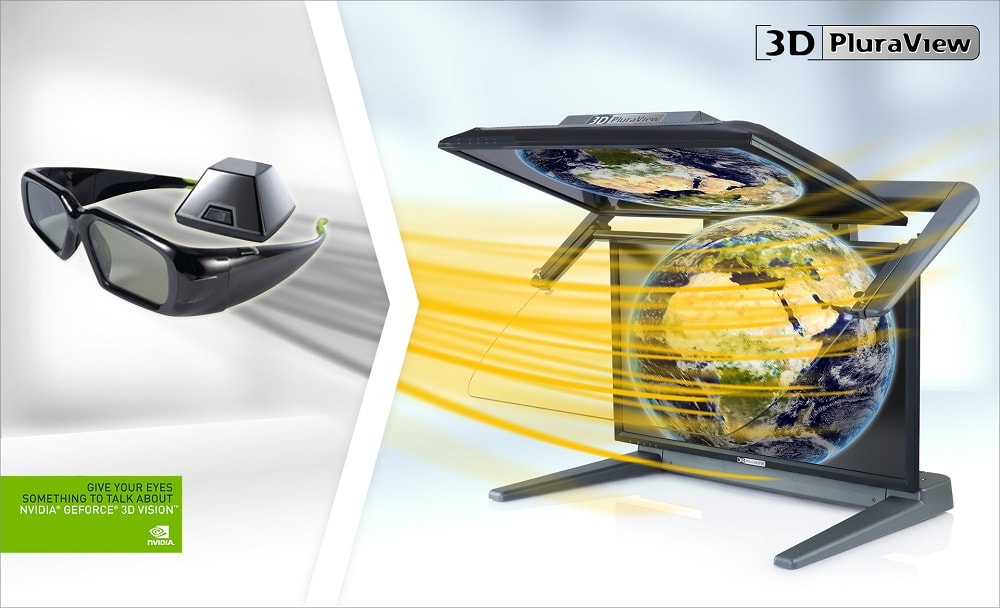

- #3d vision photo viewer software how to#
- #3d vision photo viewer software software#
- #3d vision photo viewer software series#

#3d vision photo viewer software how to#
If you prefer to use a smartphone application, check out our blog post on how to 3D scan with a smartphone to see what are the different possibilities and the best programs to create a viable 3D scan. But having a great 3D design is also an amazing tool for visualization. It can be used to get a viable 3D model and make the most of the 3D printing technology using an online 3D printing service such as Sculpteo. Why should you use a photogrammetry software?ģD scanning could be useful for various applications. For instance, archeologists are also using it to create plans of complex and remote sites.
#3d vision photo viewer software software#
There are a lot of software tools dedicated to aerial photos, photogrammetry is really useful for geographical use. Photogrammetry is used in the military, for land surveying, or real estate. It is an important tool for architects, engineers, or anyone needing to create topographic maps, architecture, geology, point clouds. Thanks to this technique, it is possible to get maps out of aerial photos. Photogrammetry is allowing to scan large objects or landscapes that would be impossible to scan otherwise. It is also possible to turn one picture into a 3D model, but obviously, you will not get an optimized result with only one picture. The more pictures you have, the more precise your 3D design will be.
#3d vision photo viewer software series#
Thanks to photogrammetry, and a series of complex algorithms, you will get a digital 3D model using multiple photos of the original real-world object thanks to a powerful reconstruction process. For this, you don’t necessarily need to use a 3D scanner, a simple smartphone, a tablet or a good camera can be used, with good image stabilization! Indeed, it is possible to make the 3D model of an object with several pictures of this object, ingeniously taken from different points of view, in order to get a complete representation of the object. Photogrammetry is the process used to create the 3D scan of an object, using multiple images. By combining a lot of pictures, you will be able to create a three-dimensional image. Photogrammetry works by extracting the geometric information of a two-dimensional image. This is the method used to turn several pictures into an accurate 3D design. If we take a look back at the history of photogrammetry, we can see that the first experiments of projective geometry are not that new! Indeed, back in 1480, Leonardo Da Vinci was trying to determine the painter’s eye point from perspective painting. Indeed, this process collects the data regarding the shape, the volume, and the depth of the subject that you are trying to scan. It is imitating the stereoscopy of the binocular human vision, and it is actually used to get all the information of existing physical objects. Photogrammetry can be used to record complex 2D and 3D motion fields. This method is using the parallax obtained between several pictures, taken from different points of view. It uses the reflections on specular objects by observing mirror images of known patterns and their deformations on the surface.Photogrammetry is a science of making a measurement from photographs. This method is used to inspect specular and partially specular surfaces.

Our software also supports deflectometry. Background points can easily be removed via thresholding, and point clouds can be intersected by a plane to create a 2D cross-section profile.Īlignment of an acquired 3D point cloud object with a known object model or point cloud template enables users to check for and locate variations and deviations in the surfaces profile of manufactured parts. Similar to blob analysis in 2D, MVTec’s softwareĮnables developers to measure and extract various features from 3D point clouds as well as segment point clouds based on those features. This is a powerful tool for robotic bin picking and automated portioning systems as well as many more 3D machine vision applications. Moreover, the generic box finder is able to locate boxes of different sizes within a predefined range of height, width, and depth, removing the need to train a model. It locates multiple objects in a single scene even if objects are partially occluded or not entirely contained in the scene.

This tool searches for arbitrarily shaped 3D objects in a scene and determines their pose in 3D space. Video: 3D vision guided robotic assembly using surface-based 3D matching.


 0 kommentar(er)
0 kommentar(er)
